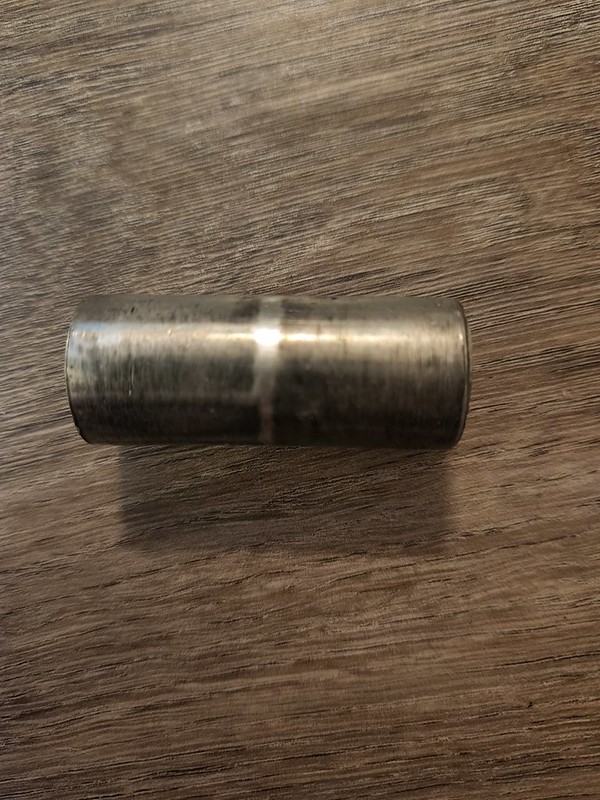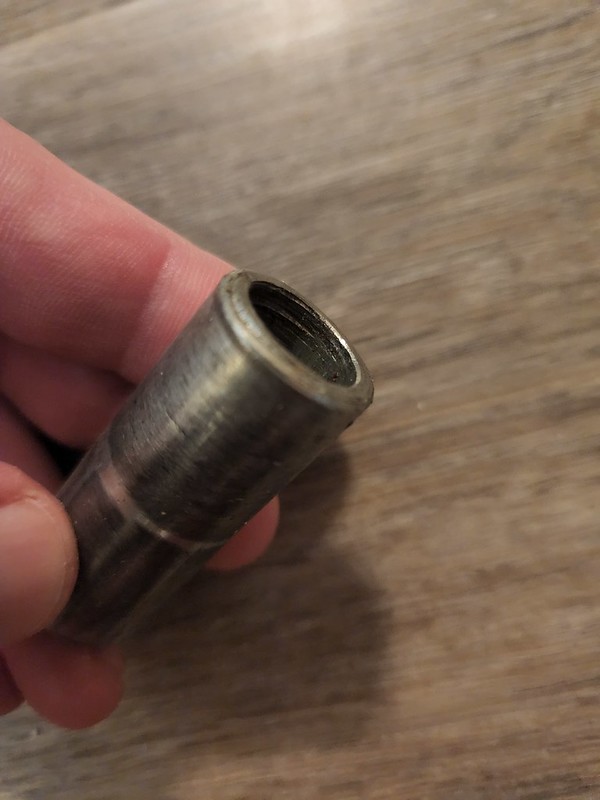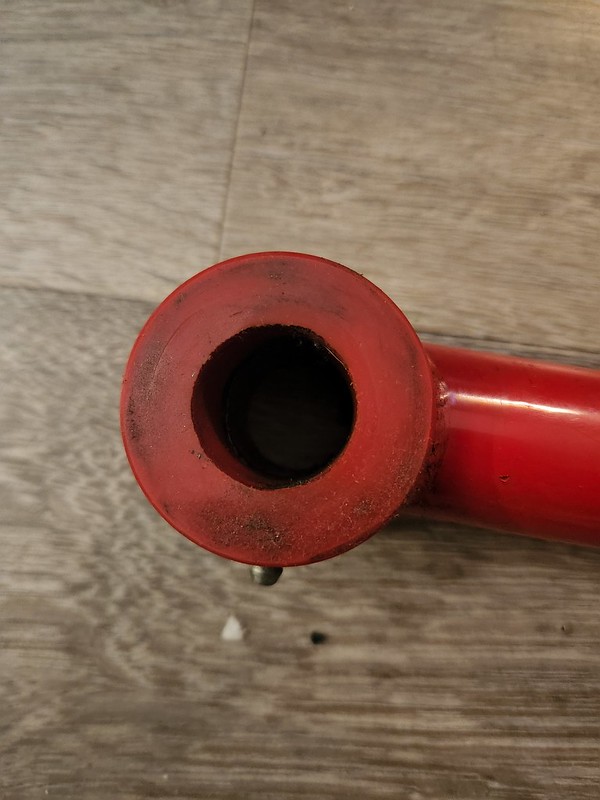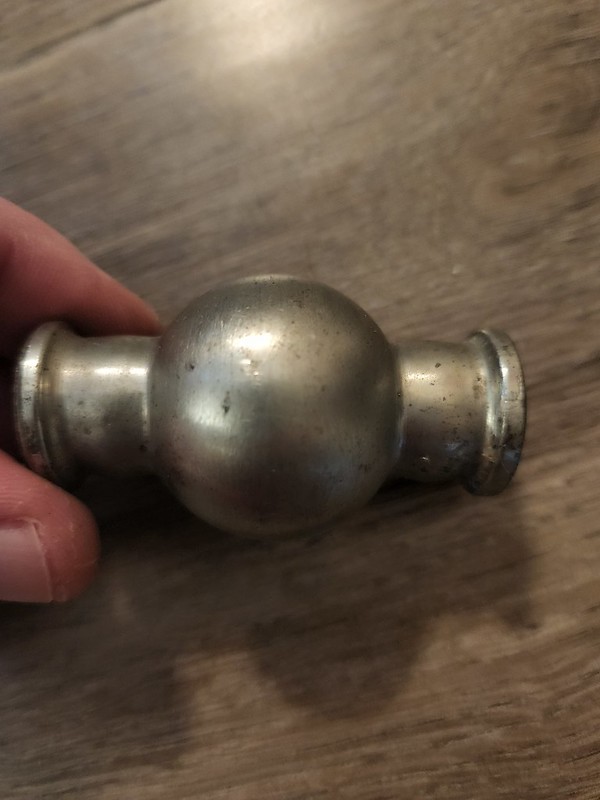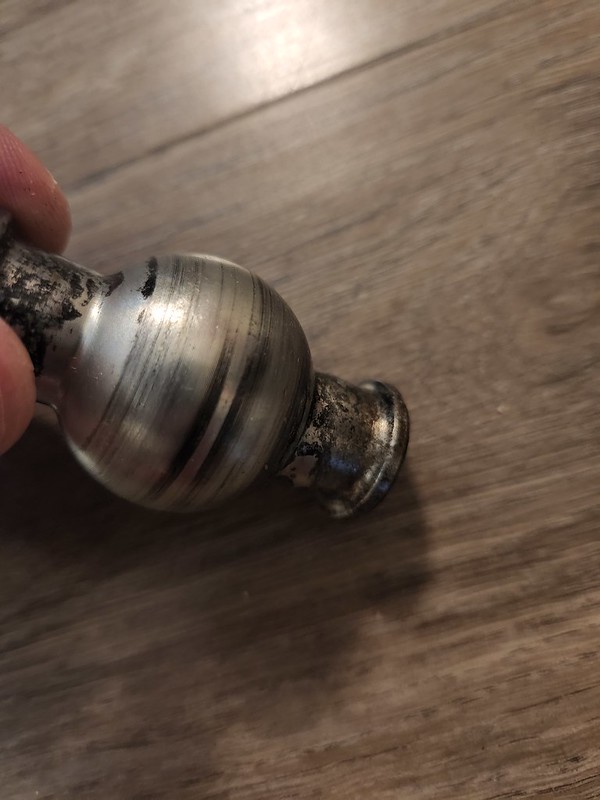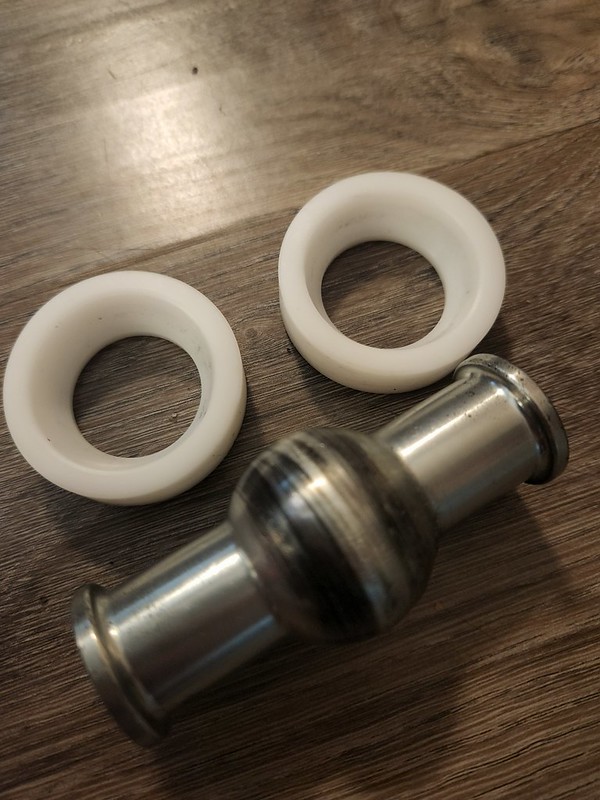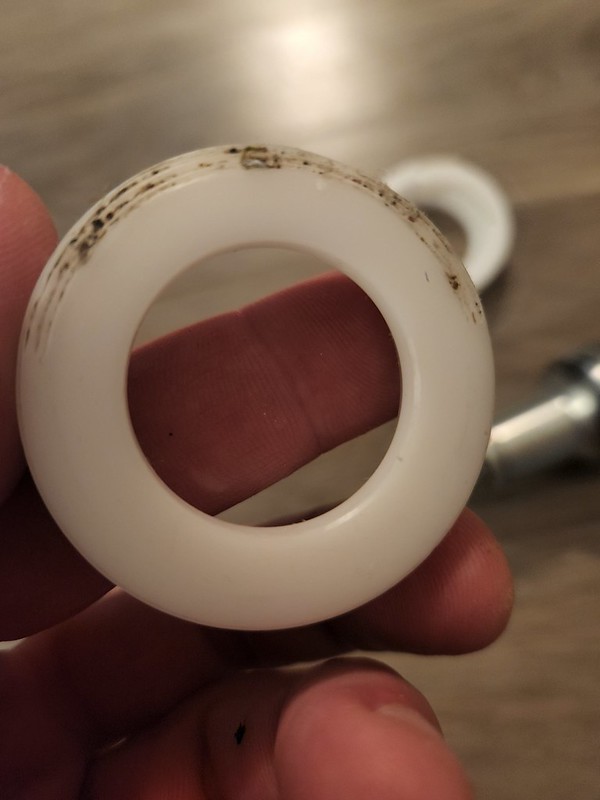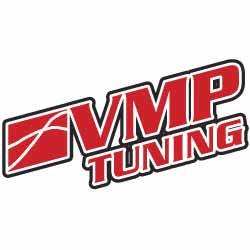]
I wanted to resurrect this if I may. I am chasing down a clunk, but mine is literally only when backing out of the driveway (and it's like how is this possible, the car isn't even moving). I have not driven my car much bc of it, and have had the parts installed for quite some time (but no more than 500mi). Hard launches, no issues. NVH sucks in 6th at 75mph, but that's what radios are for.
I have the UMI relocation brackets, UMI poly/Roto LCA's, Steeda Adjustable P/h Bar (race, so it too has rod ends/heim joints), Steeda P/h bar support, UMI Upper CA, Stock Bushing in the Diff, koni sa's, Steeda rear adjustable sway bar and Steeda Springs (race) with the GT500 bump stops.
@Unexplodedcow: Do you have any pics of what a collapsed roto-joint looked like off your car? I put all of my hardware at 130 ft/lb bc doing the UMI spec had me convinced the rear end was going to fall out of the car it clunked so bad. I am fearing I might have this issue but was curious if it's obvious by looking at it, or do you need a "before" and "After" source to tell the difference.
It sounds like you have a similar setup as my car, so I can hazard a few guesses. Oh yeah, I also had to replace the roto-joint on the pandhard bar, as it was causing side-to-side clunks. It was also the Delrin liner that had cold-flowed and stuck, causing binding and wear, which lead to slop. I replaced just the end with a regular UMI urethane bushing, and it's doing fine; no clunks or issues.
The LCA roto-joints absolutely will start collapsing with anything beyond ~90 lbs. of torque. Their torque spec is necessary to prevent that collapse. I've included some photos to show how things went on my end.
This is one LCA crush sleeve. Stainless, but slightly corroded. Notice how the stains don't show much movement? That's because the crush sleeve was spinning, not the bushing. This was due to too low of torque, and happened despite tons of grease.
Here the small amount of extrusion damage is visible. The torque box on the car was worse, as the sheet metal had basically collapsed through, so I had to install the stepped weld washers to reinforce (they're still working great).
My solution: I bought a Prothane rear LCA bushing kit for the OE arm, and it came with appropriate crush sleeves. Frankly, they are the *only* ones doing it right on the crush sleeve wall thickness. I bored out the UMI bushing to the 1" needed for the OD of the Prothane sleeve, and put it back together. It's removed in this picture as I did the same mod to the J&M arms I put back on the car. Every arm maker uses the smaller crush sleeve, and I was not having the same problem again. A thick-walled crush sleeve is necessary, IMO.
The first failed roto-joint. Notice how the spaces between the ball and ends are bulged outward. This is due to OEM torque values being applied in the MM relocation brackets. They collapsed forward, as there was some angling and imprecise fitment.
The 2nd LCA roto joint - Note the galling and blackened appearance. This is not grease. I tried the supplied grease, marine grease, and went to SuperLube PTFE-based grease (same stuff as used by Prothane and Energy Suspension). The collapse isn't as apparent, but I still had the clunk.
Here is the UCA roto-joint. Note the extreme galling. What I can say is that UMI made their M14 bolt hole precisely, and the OE bolt fits perfectly without any jiggling. The same can't be said for the center of the roto-joint, as it easily takes 9/16 hardware (slightly larger). It, too, slightly collapsed, and while it's not really visible, it was bad enough that it *also* collapsed the 1/4" thick steel mounting bracket I also bought. Spoiler: I can't use it and it's trash due to being bent, and I do not trust bending it outward - not in that application.
I went back to the stock UCA mount bracket, and used stepped washers to properly fit a stock M14 bolt, with a new J&M "extreme" style UCA. I torqued to OE specs (per their instructions), and have seen zero issues from it.
Here is the real culprit and cause of the roto-joint clunks (aside from the torque values and collapse problem): the liner material. UMI uses Delrin (POM/Acetal if you prefer). Nothing wrong with that. It's a solid material that machines and wears well. Technically, poly is more durable in a cold-flow and shock load situation from what I've read (haven't tested it). J&M uses poly liners for their polyball as well as extreme joint arms. I've driven the car more in the past year than I have in the past 5, and the J&Ms have already outlasted the UMI arms.
What can be seen in the above picture is how the delrin has been worn in by the threading inside the arm. This is a big problem, and means the delrin is cold-flowing under pressure, and explains the galling. Not great.
----------------------------------------------------------------------------------------------------------------------
After a year of pondering, driving the car, and inspecting it repeatedly, plus tearing the thing apart probably 30 times the past few years (especially last summer, where it spent the time with its butt in the air, and the rear axle out), I have some ideas on the causes.
1. Insufficient torque. Bolts themselves aren't strong in a sheer load compared to a clamping load. The idea is that enough compression/friction is created by the bolt to overcome sloppy tolerances, and still allow proper pivoting. If that torque load fails, however, you get a badly sloppy joint.
Loss of torque can happen from bolt stretch, or material compression/extrusion through whatever is being clamped. This happened on the crush sleeves, and fixing it is a relatively simple task.
2. Roto joint balls are thin-walled between the ball and flange "ears" on either end, and are prone to collapsing with an uneven load applied. This is a material or design issue. I had a friend who was going to make me some new roto balls, but instead of the stepped "ear" design, it was going to taper down to the stock thickness at the ball, allowing for a much stronger ball (and limiting some of the movement, which is more than enough anyway). He was going to make it out of IHCP (meant for hydraulic pistons) and we were discussing how much to harden it for auto use (specifically with the shock loads on the suspension).
3. Use a different joint liner material, urethane, or something that's less prone to cold-flowing. Kind of a tall order, especially where grit and dirt are concerned. Spherical bearings aren't exactly known for lasting a long time on the highway, but if they're maintained, it's good. Speaking of, so far, so great on the Steeda diff. spherical bearing.
----------------------------------------------------------------------------------------------------------------------
If you torqued to OE - you'll need to replace the Roto-joints themselves, and get a rebuild kit from UMI. Just the LCAs will probably cost $50 to your door. However, you may also need front bushings/crush sleeves if you torqued to OE and it's started extruding through the chassis. Give it a really good look, measure the hole diameters, and look at the ends of the crush sleeve.
Either way, I highly suggest doing the Prothane mod I did. As for boring out the bushing, I used a drill and went slow, to avoid sticking and tearing. It turned out reasonably smooth-bored inside, but with enough surface area to allow grease holding. Again, hasn't given me a problem in a year. I would say to do this with any aftermarket arm design that uses the small crush sleeve.
As for the roto-joint end - well, unless you have custom bits made, that is (IMO) kind of a lost cause, and I would suggest getting new arms from another maker (Steeda, BMR, J&M, OE, or a Prothane OE-style rebuild kit). I'm not a fan of poly at both ends, and found the J&M polyball to be a decent "in between". Again, needs that front bushing made larger, but the rears work fine, and don't collapse (carbon steel vs. stainless compared to the UMI).
I know - this is a very long response. Hopefully it gives you some ideas on how to stop the clunks.


